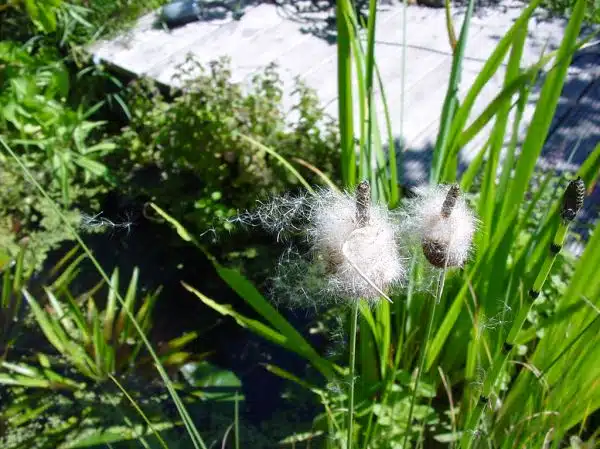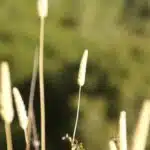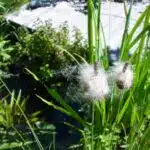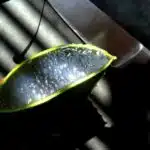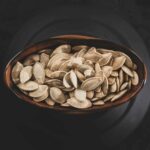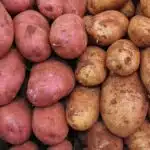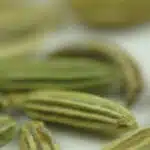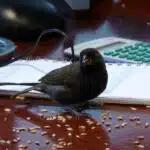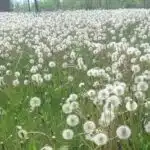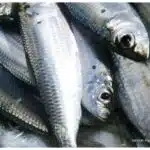Seeds are an essential part of plant life and play a crucial role in providing food, fuel, and fiber to humans and animals alike. However, not all seeds are created equal when it comes to their longevity and viability. As a seed storage and preservation expert, I have dedicated my career to understanding the factors that affect seed longevity and how to ensure their continued viability for planting.
The question of how long seeds last is one that has puzzled gardeners, farmers, and scientists for centuries. The answer depends on many factors such as the species of the plant, the conditions under which the seeds were stored, and the age of the seeds themselves. In this article, we will explore these factors in detail and provide practical advice on how to store seeds properly so that they remain viable for as long as possible. Whether you are a seasoned gardener or just starting out, understanding how long seeds last can help you plan your planting schedule more effectively and maximize your chances of success.
The Importance Of Seed Viability
Seed viability is a critical factor in crop production, as it affects the quality and quantity of yield. Viability refers to the ability of seeds to germinate and produce healthy plants. Thus, farmers need to ensure that their seeds are viable before planting them. Low seed viability can result in poor crop performance, reduced yield, and economic losses.
There are various methods for enhancing seed longevity, including proper storage conditions, genetic modification, and seed treatments. Proper storage conditions involve maintaining optimal temperature, humidity, and oxygen levels to prevent seed deterioration. Genetic modification involves altering genes responsible for seed aging or introducing protective traits that increase longevity. Seed treatments include coating seeds with fungicides or insecticides to protect them from pests and diseases.
In summary, ensuring high seed viability is crucial for maximizing crop productivity and profitability. Farmers can enhance seed longevity through proper storage conditions, genetic modification, and seed treatments. By doing so, they can reduce the risk of low yield due to poor quality seeds. In the subsequent section, we will explore factors that affect seed longevity and how farmers can mitigate their impact on seed viability.
Factors That Affect Seed Longevity
Seed storage is a crucial aspect of preserving the genetic diversity of plants. The viability of seeds depends on several factors, including environmental conditions and genetic characteristics. One of the most important factors is moisture content. Seeds that are stored in dry conditions generally last longer than those exposed to high humidity levels. Ideally, seeds should be stored at a relative humidity of less than 20% and a temperature below freezing point.
Another factor that affects seed viability is the age of the seed. As time passes, seeds lose their ability to germinate, although some species can retain their viability for decades or even centuries under proper storage conditions. However, it’s worth noting that some seeds have a shorter lifespan than others. For example, lettuce seeds can only retain their viability for about two years while tomato seeds can stay viable for up to ten years.
To ensure that seeds remain viable over an extended period, various methods of seed preservation have been developed. These include storing them in sealed containers with silica gel desiccant or using nitrogen gas flushing to remove oxygen from the container. Additionally, some species require specific treatment before storage, such as stratification (cold treatment) or scarification (abrasion). Overall, by understanding the factors affecting seed longevity and implementing appropriate preservation methods, we can ensure that our plant genetic resources are safeguarded for future generations.
In transitioning to the next section about species of plants and their seeds, it is important to note that different plant species have varying requirements when it comes to seed storage and preservation. Some may need specific temperatures or humidity levels while others may require special treatments before storage. Therefore, it’s essential to understand these needs when developing protocols for storing and preserving different types of plant seeds.
Species Of Plants And Their Seeds
How long do seeds last and are they still good? This is a common question among gardeners, botanists, and plant enthusiasts. The answer depends on the species of plant and how well the seeds are stored. Some seeds can remain viable for decades or even centuries, while others lose their viability within a year or two.
Seed preservation techniques are essential for maintaining rare and endangered plant species. The first step in preserving these plants is to collect high-quality seeds at the right time. Once collected, the seeds should be cleaned, dried, and stored in an airtight container at low temperatures to prevent moisture and fungal growth. Some plants require specialized storage conditions to preserve their viability over the long term.
Here are four key factors that affect seed longevity:
- Species – some plants have naturally longer-lasting seeds than others.
- Moisture content – dry seeds tend to last longer.
- Temperature – cooler temperatures help slow down seed aging.
- Storage conditions – proper storage techniques can extend seed viability by many years.
In summary, seed longevity varies widely depending on the species of plant and how well the seeds are stored. Seed preservation techniques play a crucial role in maintaining rare and endangered plant species for future generations. In the next section, we will discuss optimal storage conditions for maintaining seed viability over time without compromising its quality or quantity.
Storage Conditions For Optimal Viability
Seed viability is a crucial factor in ensuring successful germination and plant growth. The longer seeds are stored, the lower their chances of viability. However, proper storage conditions can greatly extend seed longevity. It is recommended to store seeds in a cool, dark, and dry place to minimize moisture and heat exposure. Any exposure to excess moisture or heat can lead to premature deterioration and eventual loss of seed viability.
Seed storage containers play an important role in preserving seed quality. Containers should be air-tight to prevent moisture from entering while allowing for some airflow to prevent mold growth. Glass jars with rubber seals or plastic containers with tight-fitting lids are ideal options for long-term storage. Additionally, it is important to label each container with the date of storage and the type of seed stored to easily monitor their viability over time.
Seed viability testing is a useful tool for determining whether stored seeds are still viable before planting them. This testing involves placing a sample of seeds in a moist paper towel or soil mix and monitoring germination rates over several days. If the germination rate is below 50%, it may be best to purchase new seeds or collect fresh ones if possible. By following proper storage methods and conducting regular seed viability testing, gardeners can ensure successful germination and healthy plant growth for years to come.
Having optimal temperature and humidity levels for storing seeds can also significantly increase their longevity. In the next section, we will discuss the ideal range of temperature and humidity levels for different types of seeds as well as additional tips on how to properly store them.
Ideal Temperature And Humidity Levels
Proper storage is crucial to maintain seed viability. When it comes to temperature, seeds are best stored in cool and dry conditions. A constant temperature of around 40°F or lower is recommended for long-term storage. However, fluctuations in temperature can also have a significant impact on seed longevity. Drastic changes in temperature can cause the moisture inside the seed to expand and contract, leading to cracks or damage that can reduce germination rates.
Aside from temperature, moisture control is also critical in seed storage. Seeds should be kept dry to prevent mold growth and other types of deterioration caused by moisture. The ideal relative humidity (RH) level for seed storage is between 20% and 40%. If RH levels are too high, it can lead to mold growth; conversely, if it’s too low, seeds may become brittle and lose their viability.
Temperature fluctuations and moisture control are two factors that need close attention when storing seeds. These factors not only affect the longevity of the seeds but can also lower their germination rate. Therefore, it’s essential to monitor these conditions regularly and adjust accordingly if necessary. In the next section, we’ll discuss another vital step in seed preservation: protecting them from light, air, and moisture.
Protecting Seeds From Light, Air, And Moisture
Protecting Seeds from Light, Air, and Moisture
There is a popular belief that seeds can last forever. However, this is not entirely true. While many seeds can remain viable for years under the right conditions, they will eventually lose their ability to germinate. Seed preservation techniques are crucial to maintain seed viability for as long as possible. Protecting seeds from light, air, and moisture is essential to ensure that they remain usable.
Light is one of the factors that can reduce seed viability over time. Exposure to light triggers chemical reactions in the seed that can lead to its deterioration. Therefore, it is important to store seeds in a dark place such as a closet or a drawer. Similarly, air can also affect seed viability by causing them to dry out quickly or become contaminated with mold or bacteria. DIY seed storage solutions such as vacuum-sealed bags or glass jars with tight-fitting lids can help keep air away from the seeds.
Moisture is another factor that affects seed viability. Excessive moisture can cause seeds to rot or sprout prematurely before planting time arrives. To prevent this, it is important to store seeds in a cool and dry place such as a refrigerator or freezer. However, it is important not to freeze the seeds until they have been properly dried first. With proper storage techniques, most seeds can remain viable for several years, allowing you to enjoy your favorite plants season after season.
As we discussed earlier, protecting seeds from light, air, and moisture can help prolong their viability for several years. However, even with these precautions in place, all seeds have an expiration date beyond which they will no longer be viable for planting purposes. In our next section on ‘the age of seeds and their viability,’ we will explore how long different types of seeds last and what factors influence their lifespan.
The Age Of Seeds And Their Viability
The age of seeds and their viability are crucial factors to consider in seed storage and preservation. The viability of a seed refers to its ability to germinate and grow into a healthy plant. Seeds have different lifespans depending on the species, storage conditions, and other factors affecting their longevity.
Factors affecting seed viability include moisture content, temperature, oxygen availability, and light exposure. High humidity levels can cause seeds to rot or develop mold, while low humidity can lead to desiccation and loss of viability. Temperature fluctuations can also affect the longevity of seeds by speeding up or slowing down their metabolism. Oxygen is necessary for respiration but can also cause oxidation reactions that damage the genetic material in seeds. Lastly, light exposure can break down pigments in seeds or trigger premature germination.
Fortunately, there are ways to extend the longevity of seeds and preserve their viability. Proper seed storage techniques involve keeping them dry, cool, and dark. Seeds should be stored in airtight containers with desiccants such as silica gel packets or rice grains to absorb excess moisture. They should also be placed in cool areas such as refrigerators or freezers but not directly exposed to freezing temperatures that may damage them.
- Did you know?
- Some ancient seeds have been found viable after thousands of years due to natural preservation methods like being frozen in permafrost.
- Certain medicinal plants like ginseng require stratification (exposure to cold moist conditions) for extended periods before they will germinate.
In summary, understanding the factors affecting seed viability is crucial for successful seed storage and preservation. By following proper storage techniques and taking care of environmental conditions, it is possible to extend the lifespan of many types of seeds for future use. In the next section, we will explore how to test seed viability before planting them for optimal results.
Testing Seed Viability
For seed storage and preservation experts, understanding the viability of seeds is crucial. It helps ensure that seeds are planted at the right time to maximize their germination potential. One example is the case of corn seeds stored for over 10 years in a cool, dry place. When tested for viability, only 50% of the seeds showed signs of life. This case illustrates that even with proper storage conditions, seed viability has limitations.
To test seed viability, there are several methods available to experts. The most common method involves counting the number of viable and non-viable seeds after they have been subjected to specific conditions, such as being soaked in water or exposed to a certain temperature range. Other methods involve using specialized equipment like tetrazolium chloride or electrical conductivity testers. Interpreting seed viability results requires expertise, as several factors can impact whether a seed is considered viable or not.
Seed viability testing methods provide valuable information about whether seeds are still good for planting or not. However, it’s important to note that even if a majority of seeds are deemed viable, germination rates can still vary depending on factors like soil quality and weather conditions. In the subsequent section about ‘germination rates and their impact on plant growth,’ we will discuss how these variables play a role in ensuring successful crop production.
Germination Rates And Their Impact On Plant Growth
Seed viability testing is an essential step in assessing the quality of stored seeds. It measures the proportion of viable seeds in a sample, which determines the potential for germination and plant growth. Testing is typically done by germinating a portion of a sample under optimal conditions and counting the number of seeds that sprout. The results can help determine whether seeds are still good and how long they will remain viable.
Improving germination rates is crucial for maximizing seed potential. Several factors influence germination rates, including seed age, moisture levels, temperature, and light exposure. Proper storage conditions can help preserve seed quality and improve germination rates. For example, storing seeds in a cool, dry place can extend their lifespan. Additionally, stratification or scarification treatments may be needed to break dormancy in certain species.
Understanding seed dormancy is the next step to optimizing germination rates. Dormancy is a natural mechanism that prevents seeds from germinating until conditions are favorable for growth. Different species have different types of dormancy, such as physical or chemical barriers that prevent water absorption or embryo growth. By understanding these mechanisms, growers can use appropriate techniques to overcome dormancy and improve germination rates. Overall, proper storage conditions and understanding seed dormancy are vital steps in ensuring high-quality seeds for successful plant growth.
Understanding Seed Dormancy
With germination rates playing a crucial role in plant growth, it is essential to understand the longevity of seeds. In general, seeds can last for several years if they are stored correctly. However, the lifespan of a seed depends on various factors such as the type of seed and its storage conditions. For instance, some seeds like corn and beans can remain viable for up to five years, while others like lettuce and onion seeds can only last for two years.
Understanding seed stratification is crucial when it comes to increasing the lifespan of seeds. Stratification refers to the process of exposing seeds to a cold environment before planting them. This technique is particularly useful for dormant seeds that require specific environmental conditions to break their quiescence state. By replicating nature’s natural cycle of winter followed by spring, we can stimulate the necessary conditions for breaking dormancy in certain types of seeds.
Breaking seed dormancy is an essential step towards improving germination rates. By understanding how different types of seeds respond to specific treatments such as light exposure or temperature fluctuations, we can increase the likelihood of successful germination. For instance, some species require scarification- a process that involves nicking or scratching their outer coat before planting- while others need moist chilling or dry heat treatment. By gaining knowledge about these processes and applying them correctly, we can maximize our chances of successful crop production.
Breaking Seed Dormancy For Improved Germination
As a seed storage and preservation expert, it is important to know how to break seed dormancy to improve germination rates. Seeds have evolved different mechanisms to remain dormant until specific environmental conditions are met, which aids in their survival. However, breaking seed dormancy is necessary when planting seeds for cultivation purposes.
One effective way to break seed dormancy is through seed stratification. This technique involves exposing the seeds to a period of cold and moist conditions, simulating winter weather, which triggers the seeds’ natural responses for germination. The length of time required for seed stratification varies depending on the species of plant and the specific environmental needs of each type of seed.
Another method for breaking seed dormancy is scarification techniques. These techniques involve physically altering the outer layer of the seed coat by scratching or nicking it, making it easier for moisture and oxygen to reach the embryo inside. Scarification can be achieved through mechanical methods such as sandpaper or a file, or through chemical methods such as soaking in acid or boiling water.
In order to ensure successful germination, it is important to understand the specific requirements and characteristics of each type of seed. Breaking seed dormancy can greatly improve germination rates and lead to healthier plants. In the next section, we will explore techniques for increasing seed longevity in order to preserve these valuable genetic resources for future generations.
Techniques For Increasing Seed Longevity
Storage conditions can play a major role in determining how long seeds remain viable and remain in a usable condition. Temperature, moisture, and light are all critical to consider when storing seeds. Various seed treatments can also be used to extend the seed’s longevity, such as coating the seeds with a fungicide, drying and cool storage, or treating the seed with a chemical preservative. Different seeds may require different treatments and conditions, so it is important to research the best way to store and preserve any given seed.
Storage Conditions
Seed storage methods play a significant role in determining seed longevity. Proper storage conditions can help seeds retain their germination capacity for an extended period. Seeds are living organisms with metabolic activities that slow down during storage, and the rate of this decline is influenced by factors such as temperature, humidity, light exposure, and oxygen availability.
The ideal temperature range for seed storage varies depending on the species; however, most seeds can be stored at a temperature range between 32°F to 41°F (0°C to 5°C). Low temperatures reduce the rate of metabolic activity and prevent the formation of mold and fungi that can damage seeds. Humidity levels should also be kept low to avoid moisture absorption and subsequent deterioration of seed quality. Seed packaging materials such as air-tight containers or sealed bags with desiccants can help regulate humidity levels.
Oxygen availability affects seed longevity since it influences the rate of respiration. Seeds require oxygen during germination, but during storage, high oxygen concentrations lead to oxidative damage that reduces seed viability. Therefore, hermetic seed packaging that limits oxygen availability is recommended for long-term storage. In conclusion, proper seed packaging materials and ideal storage conditions are crucial in preserving seed longevity. Seed preservation experts recommend storing seeds in cool, dry places with limited oxygen availability to ensure high germination rates even after several years of storage.
Seed Treatments
Seed preservation experts employ various techniques to extend seed longevity, including proper storage conditions and packaging materials. However, seed treatments are also crucial in improving seed quality and increasing their shelf life. Seed coatings are a popular method of treating seeds that involves applying a thin film of protective material over the seed surface to improve its resistance to environmental stresses.
Seed coatings can enhance seed performance by providing protection against pathogens, pests, moisture, and other environmental stressors. The protective layer also improves water absorption and nutrient uptake during germination, leading to faster emergence and higher survival rates. Moreover, seed coatings can incorporate beneficial microorganisms that promote plant growth and health.
Seed preservation experts recommend using eco-friendly seed coating materials that contain natural polymers such as chitosan or cellulose. These materials are biodegradable and do not harm the environment or human health. Furthermore, the application of seed coatings is easy and cost-effective, making it a practical solution for farmers who want to improve crop yields while reducing input costs. In summary, incorporating seed treatments like coatings alongside proper storage conditions can significantly increase the longevity of seeds while improving crop productivity.
Freezing Seeds For Long-Term Storage
Seed viability maintenance is an important aspect of preserving seed quality. Seeds can last for varying lengths of time depending on the species, storage conditions, and other factors. However, there are some techniques that can be used to increase the longevity of seeds. One such technique is to reduce the moisture content of the seeds before storing them.
Reducing the moisture content of seeds is essential for long-term storage. Moisture can lead to premature germination or fungal growth which can damage the seeds and reduce their viability. To achieve this, seeds should be dried thoroughly before being stored. This process involves removing as much moisture as possible without damaging the seed coat or embryo inside.
Another technique for maintaining seed viability is by controlling temperature and humidity during storage. Seeds should be stored in a cool, dry place with a consistent temperature. High temperatures and humidity levels can accelerate seed deterioration and decrease their shelf life. Proper storage conditions can significantly extend the lifespan of seed collections.
Preserving seed quality requires proper labeling and organizing of seed collections. It is important to label each container with information such as species name, date collected, and any relevant notes about its origin or special characteristics. This will help keep track of what has been collected and when it was collected, making it easier to maintain proper storage conditions over time. Organizing by species or type can also make it easier to locate specific seeds when needed for planting or research purposes.
Transition: Now that we have discussed techniques for increasing seed longevity through proper storage conditions, let’s move on to the importance of labeling and organizing seed collections in order to preserve their quality over time.
Labeling And Organizing Seed Collections
Proper seed organization is crucial to ensure that seeds remain viable for a long time. One of the most important things to consider when organizing your seed collection is labeling. Labels should be clear, concise, and contain all relevant information about the seed. This includes the plant species, variety, date of collection, and any other pertinent information. By doing this, you can easily track inventory and know how long each type of seed has been stored.
Another important aspect of seed organization is storage. Seeds should be stored in a cool, dry place to prevent moisture and heat from damaging them. They should also be kept away from direct sunlight as UV rays can cause damage to the seeds over time. Proper storage containers are also essential for maintaining seed viability. The container should be airtight to prevent moisture from entering and damaging the seeds.
Tracking inventory is an ongoing process that requires regular attention to ensure that your seed collection remains organized and viable. It’s important to periodically check on your seeds to make sure they are still viable and remove any that have gone bad or expired. By keeping track of your inventory, you can easily identify which seeds need attention and take steps to preserve their viability for successful planting.
Transition: Now that we’ve covered proper labeling and organization techniques for your seed collection, let’s move on to ensuring seed viability for successful planting.
Conclusion: Ensuring Seed Viability For Successful Planting
Labeling and organizing seed collections are crucial steps in maintaining the viability of seeds. However, even with proper storage, seeds do not last forever. As a seed storage and preservation expert, it is important to understand the lifespan of different types of seeds.
Did you know that some seeds can remain viable for more than 100 years? These include certain varieties of beans, peas, and corn. However, most vegetable seeds have a lifespan of 2-3 years while flower seeds can last up to 5 years. It is important to note that these figures are only estimates and the actual viability of seeds depends on several factors such as storage conditions and initial quality.
To ensure successful planting, seed viability testing is recommended. This involves conducting a germination test to determine how many seeds will sprout from a batch. By maximizing germination rates through this process, gardeners can save time and effort by only planting viable seeds. Seed viability testing also helps in determining when it’s time to discard old or low-quality seed batches.
To summarize, understanding the lifespan of different types of seeds is essential for any seed storage and preservation expert. Conducting regular seed viability tests maximizes germination rates which ultimately leads to successful plant growth. With proper labeling, organization, and testing techniques in place, gardeners can ensure that their seed collection remains viable for years to come without wasting resources on non-viable batches.
Conclusion
Seed viability is a crucial factor in successful planting and crop production. The longevity of seeds can be influenced by various factors, including the species of the plant, storage conditions, temperature, and humidity levels. It is essential to understand these factors to ensure that seeds remain viable for an extended period.
Different plant species have varying seed lifespans, with some lasting only a few months while others can survive for decades. However, proper storage conditions are necessary to maximize seed viability regardless of their longevity potential. Seeds should be stored in cool and dry environments to prevent moisture buildup and exposure to heat. Additionally, labeling and organizing seed collections can help in tracking the germination rates and overall viability of each batch.
For instance, a hypothetical case study on tomato seeds illustrates how proper storage can enhance seed longevity. Suppose a farmer stores his tomato seeds at room temperature for two years without proper labeling or organization. In that case, he may experience low germination rates during the next planting season due to decreased seed viability. However, if the farmer had stored the tomato seeds in a cool and dry environment with clear labeling indicating the date of harvest and variety, he could have achieved higher germination rates and overall crop yield.
In conclusion, it is imperative to understand the factors that affect seed longevity to ensure successful planting. Proper storage conditions such as cool temperatures and low humidity levels can significantly increase seed viability. Labeling and organizing seed collections enhance tracking of germination rates and general viability over time. By following these guidelines, gardeners and farmers alike can enjoy high-quality crops year after year.
Image Credits
- “dwarf reed mace seed release context view” by dchallender (featured)

